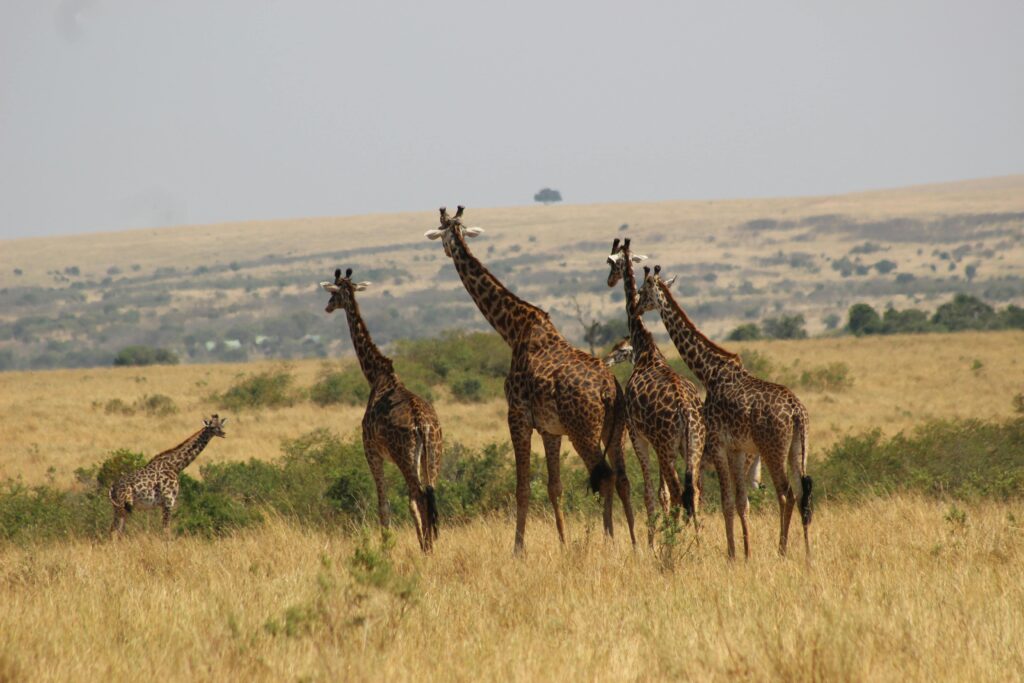Kenya offers an abundance of breathtaking landscapes, wildlife, and rich cultural experiences for adventure seekers and nature lovers from across the globe. This East African gem features diverse geography and a pleasant climate, providing unique African safari opportunities year-round. Whether witnessing the Great Migration in the Masai Mara, relaxing on Indian Ocean beaches, or immersing in Nairobi’s vibrant culture, Kenya promises nonstop excitement

Understanding Kenya’s Climate: A Key to Planning Your Trip
When planning your safari adventure in Kenya, understanding the climate is crucial to ensuring an unforgettable experience. The weather in Kenya can vary significantly depending on the time of year and the region you plan to visit. Here’s a month-by-month guide to help you navigate Kenya’s climate and choose the perfect time for your safari:
January & February: Peak Safari Season
- Weather: January and February are characterized by warm temperatures and minimal rainfall, making it an ideal time for game viewing.
- Activities: Witness wildlife in their natural habitat, explore the Masai Mara, and indulge in beach holidays along the Kenyan coast.These months are great for seeing big cats like lions, leopards, and cheetahs, as well as large herbivores such as elephants and buffaloes.
- Highlights: Experience Africa’s second highest peak, Mount Kenya, and encounter a diverse range of species at watering holes.
March to May: Transitioning Seasons
- Weather: March marks the transition from hot and dry to wet and rainy. Expect rain throughout the country, transforming the landscape into a lush green paradise.
- Activities: Despite the rain, this period offers lower costs and fewer crowds, making it perfect for budget travelers and photographers. During this time, many herbivores give birth, offering sightings of adorable baby animals like wildebeests, zebras, and gazelles.
- Highlights: Capture stunning wildlife images against the backdrop of dramatic skies and vibrant greenery.
June to October: The Long Dry Season
- Weather: June to October marks the long dry season, characterized by pleasant temperatures and minimal rainfall. It’s considered the best time for a classic safari experience.
- Activities: Witness the Great Migration in the Masai Mara, embark on game drives to spot the Big Five, and enjoy outdoor adventures in Kenya’s national parks. The dry season is also a great time for bird viewing, such as the spectacular flamingos found at Lake Nakuru and Lake Bogoria. This period is also excellent for witnessing the Great Migration in the Masai Mara, with millions of wildebeests, zebras, and gazelles on the move.
- Highlights: Experience the awe-inspiring spectacle of thousands of zebras and wildebeest crossing the Mara River, with hungry crocodiles lying in wait.
November & December: Short Rainy Season
- Weather: November heralds the short rainy season, with intermittent rainfall across the country. Despite the rain, wildlife viewing remains excellent, and prices are lower.
- Activities: Explore Kenya’s national parks, observe the diverse birdlife, and immerse yourself in the cultural festivities of the holiday season.As the short rains begin, animals start to congregate around water sources, making it easier to spot them in national parks and reserves.
- Highlights: Marvel at the abundance of bird species and enjoy spectacular wildlife sightings amidst the verdant landscape.
Planning Your Kenya Safari: Expert Tips for a Memorable Experience
Now that you have a better understanding of Kenya’s climate throughout the year, here are some tips to help you plan a safari adventure that exceeds your expectations:
- Choose the Right Accommodation: Whether you prefer luxury lodges or intimate tented camps, Kenya offers a range of accommodation options to suit every taste and budget.
- Book Early: To secure the best rates and availability, it’s advisable to book your Kenya safari well in advance, especially during peak seasons.
- Pack Wisely: Remember to pack lightweight, breathable clothing, sturdy walking shoes, and essential safari gear such as binoculars and a camera.
- Stay Informed: Keep abreast of travel advisories and entry requirements, and consult with a reputable tour operator or safari expert for personalized advice.
Embarking on a safari adventure in Kenya is a dream come true for many travelers. By understanding Kenya’s climate and planning your trip accordingly, you can ensure a truly unforgettable experience amidst the wonders of Africa’s wilderness. Whether you’re tracking lions in the savannah or savoring the tranquility of a sunset over the Maasai Mara, your journey through Kenya promises to be an adventure of a lifetime.
So what are you waiting for? Start planning your safari adventure in Kenya today and let the magic of Africa captivate your soul.






